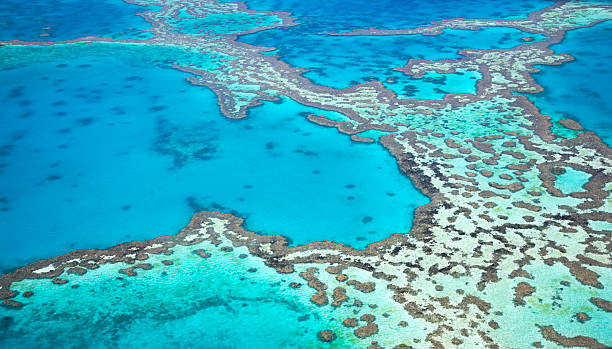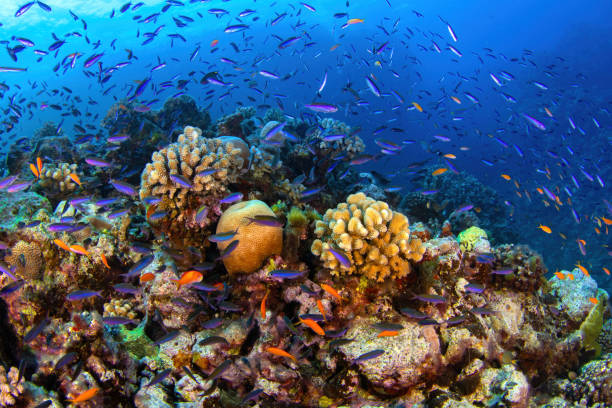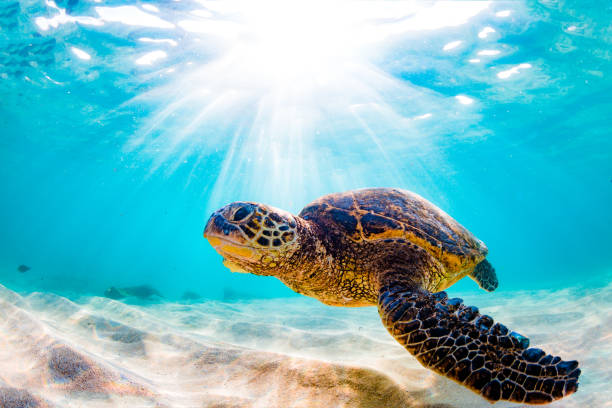Stretching over 2,300 kilometers along the northeast coast of Australia, the Great Barrier Reef is not only the largest coral reef system on Earth but also a bucket-list destination for divers, snorkelers, and nature enthusiasts worldwide. Teeming with vibrant marine life, coral gardens, sunken shipwrecks, and crystal-clear waters, the Reef offers a once-in-a-lifetime experience for those seeking underwater adventure and ecological wonder.
In this ultimate 2025 guide to exploring the Great Barrier Reef, we’ll cover everything you need to know: the best dive sites, travel tips, sustainability insights, wildlife highlights, and how to make the most of your trip—whether you’re a beginner snorkeler or an experienced scuba diver.

Why the Great Barrier Reef Is a Diver’s Paradise
The Great Barrier Reef Marine Park, a UNESCO World Heritage Site, is a natural marvel made up of nearly 3,000 individual reefs and over 900 islands. Its ecosystem is one of the most diverse on the planet, home to:
- Over 1,500 species of fish
- 400 types of coral
- 134 species of sharks and rays
- 6 of the world’s 7 marine turtle species
- Dugongs, dolphins, and migrating whales
Whether you’re plunging into colorful coral atolls, exploring hidden caves, or drifting with the currents alongside manta rays, the reef delivers an unparalleled underwater experience.
Best Time to Visit the Great Barrier Reef in 2025
Ideal Season: May to October (Dry Season)
- Weather: Clear skies, low rainfall, and calm seas.
- Visibility: Excellent underwater visibility (15-25 meters).
- Marine Encounters: Best time to see manta rays, reef sharks, and migrating whales.
November to April (Wet Season)
- More rainfall and humidity.
- Possible jellyfish presence (wear a stinger suit!).
- Fewer tourists, more budget-friendly deals.
🌟 Pro Tip: Book well in advance for the May–August window, especially if you plan to dive or snorkel around popular sites like Cairns or the Whitsundays.
Top Dive & Snorkel Spots on the Great Barrier Reef
1. Cod Hole (Ribbon Reefs)
- Best For: Up-close encounters with giant potato cod.
- Experience Level: Intermediate to advanced divers.
- Why Visit: Home to friendly potato cod, coral gardens, and great visibility.
2. Osprey Reef (Coral Sea)
- Best For: Deep diving and wall diving.
- Experience Level: Advanced.
- Highlights: Dramatic drop-offs, sharks, and pristine coral walls.
3. Agincourt Reefs (Port Douglas)
- Best For: Snorkeling & beginner divers.
- Experience Level: All levels.
- Highlights: Accessible via day trips, vibrant reef structures, clear lagoons.
4. SS Yongala Wreck (Townsville)
- Best For: Wreck diving.
- Experience Level: Advanced.
- Why Dive: Australia’s most famous shipwreck, teeming with marine life like sea snakes, turtles, and groupers.
5. Heron Island
- Best For: Eco-tourism and shallow reef access.
- Experience Level: All levels.
- Perks: Great for snorkeling straight off the beach, nesting turtles in season.
6. Lady Elliot Island
- Best For: Manta rays and eco-friendly diving.
- Seasonal Sightings: Manta rays peak from May to August.
- Bonus: 100% solar-powered resort and high commitment to reef conservation.
Getting There: Gateway Cities to the Reef

Cairns (Main Gateway)
- Frequent flights from major Australian cities.
- Gateway to the Outer Reef and Fitzroy Island.
- Best for liveaboard diving trips.
Port Douglas
- More laid-back and upscale.
- Ideal for exploring Low Isles and Agincourt Reefs.
Townsville
- Access point for SS Yongala wreck.
- Offers reef tours with fewer crowds.
Airlie Beach
- Starting point for Whitsundays adventures.
- Great for couples and sailing enthusiasts.
Types of Dive Experiences to Try
1. Day Trips
Perfect for beginners or travelers on a schedule. Includes a boat ride, gear, guide, and one or two dives/snorkel sessions.
2. Liveaboard Cruises
Multi-day dive adventures where you live on a boat and explore remote reef sites. Ideal for serious divers.
Popular Options in 2025:
- Spirit of Freedom
- Pro Dive Cairns
- Coral Sea Dreaming
3. Introductory Dives (No Certification Needed)
Great for first-time divers. Includes a short training session followed by a supervised reef dive.
4. Snorkeling Safaris
Shallow reef lagoons are perfect for snorkeling. Look for coral gardens, clownfish, and green sea turtles.
Marine Life Encounters to Expect
The Great Barrier Reef is an underwater zoo. Here’s a glimpse of what you might see:
| Marine Creature | Best Time to Spot | Where to See |
|---|
| Green Sea Turtle | Year-round | Heron Island, Lady Elliot |
| Manta Rays | May–August | Lady Elliot Island |
| Whale Sharks | August–October | Northern reef areas |
| Humpback Whales | June–September | Cairns to Hervey Bay |
| Nemo (Clownfish) | Year-round | Coral Gardens (All reef zones) |
| Reef Sharks | Year-round | Osprey Reef, Ribbon Reefs |
📸 Tip: Bring an underwater GoPro or rent one. The footage is priceless.
Where to Stay: Reefside Resorts & Eco-Lodges

Lady Elliot Island Eco Resort
- Solar-powered, off-grid.
- Great for manta ray viewing.
- On-site marine biologists.
Heron Island Resort
- Located directly on the reef.
- Ideal for turtle nesting season.
- Eco-conscious and serene.
Crystalbrook Flynn (Cairns)
- Modern, luxurious city stay.
- Rooftop bar with reef views.
- Walkable to marina for tours.
Whitsundays Yacht Charters
- Sleep onboard a catamaran or sailing yacht.
- Great for honeymooners and adventurers.
What to Pack for Your Reef Adventure
Must-Haves:
- Reef-safe sunscreen (no oxybenzone or octinoxate)
- Lightweight, UV-protective clothing
- Waterproof phone case
- Reusable water bottle
- Sea sickness tablets (for boat trips)
- Dive certification (if applicable)
🌿 Always choose reef-safe products to help protect the fragile coral ecosystem.
Diving Tips for First-Timers
- Book Early: Reef tours and accommodations sell out quickly, especially in peak season.
- Get Certified: If you’re not certified yet, consider getting your PADI Open Water license before your trip.
- Respect the Reef: Never touch coral or marine animals.
- Listen to Your Guide: They know where the coolest stuff is and how to stay safe.
- Take it Slow: The reef rewards patience—watch and let the marine life come to you.
Eco-Conscious Reef Travel: How to Visit Responsibly
Do:
- Use reef-safe sunscreen.
- Support eco-certified tour operators.
- Avoid single-use plastics.
- Learn about marine life and coral conservation.
Don’t:
- Stand or walk on coral.
- Feed marine animals.
- Collect shells or marine life.
Conservation Efforts in 2025
Australia continues to invest in Reef restoration projects such as:
- Coral planting and re-seeding.
- Crown-of-thorns starfish management.
- Supporting Indigenous ranger programs.
🐠 Join a Citizen Science Program like Eye on the Reef to contribute to conservation during your visit.
Budget Breakdown: What to Expect
Budget Breakdown: What to Expect
| Expense | Average Cost (AUD) |
|---|---|
| Reef Day Trip (Snorkel) | $180 – $250 |
| Intro Dive Experience | $250 – $350 |
| Liveaboard (3-day) | $900 – $1,500 |
| Accommodation (mid-range) | $120 – $250/night |
| Flights from Sydney | $150 – $300 return |
✈️ Tip: Book flights and tours as a package deal for discounts.
FAQs: Everything You Need to Know
❓ Is it safe to dive on the Great Barrier Reef?
Yes. Certified guides, modern equipment, and excellent safety standards make it ideal even for beginners.
❓ Do I need travel insurance?
Absolutely—especially if you’re planning dive or adventure activities.
❓ Can I visit if I can’t swim?
Yes! Many snorkeling tours provide floatation devices and guides to help non-swimmers enjoy the reef safely.
❓ Is the Reef still healthy in 2025?
While climate change continues to pose threats, major conservation efforts and reef resilience programs are showing signs of success. Many areas still offer stunning biodiversity.
Final Thoughts: The Reef Awaits
The Great Barrier Reef isn’t just a destination—it’s a living treasure trove of color, movement, and life. Whether you dream of floating alongside a sea turtle, photographing clownfish, or diving deep into a coral canyon, the Reef delivers something magical for every traveler.
In 2025, with eco-tourism initiatives on the rise and improved accessibility, there’s never been a better time to explore this aquatic wonderland. Just remember: the more we cherish and protect it, the longer it will thrive for generations to come.
